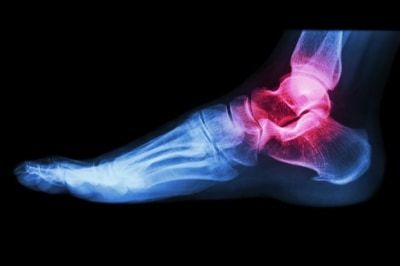Sore muscles? The heat vs. cold debate.

Working out is one of the best things you can do for your body. But alongside bumps, sprains, and bruises, muscle soreness affects almost all of us. It’s the “common cold” of the workout world, and to some extent it’s something we just have to put up with. But what’s the best way to reduce both the incidence and severity of Delayed Onset Muscle Soreness (DOMS)? Conventional wisdom touts the benefits of both heat and ice. But isn’t this contradictory advice? And which one is better?
Heat or Ice for Injury?
As with many sports health issues, there’s no simple answer.
First we’ll consider cold therapy, technically known as cryotherapy. Researchers at the University of Kentucky reviewed 15 large scale studies containing over 300 college athletes. After periods of high level performance, a group of these athletes were given 5 minute, full body ice baths. They reported a 20% decrease in DOMS symptoms over their non-icing counterparts—quite a substantial finding.
For those of us unable (or unwilling) to take post-workout ice baths, what about using ice pack? As research would have it, these can be effective as well. Blood flow is certainly a sign of healthy muscle tissue, but too much isn’t necessarily a good thing. Elevated blood flow after an intense workout is an integral part of both inflammation and muscle soreness. Athletes who applied ice effectively reduced excessive blood flow by about 50% after icing for 10 minutes. This study didn’t ask specifically about muscle soreness, yet cryotherapy using ice packs almost certainly reduces symptoms.
So it would appear that cryotherapy does indeed help reduce the severity of muscle soreness. This being said, it’s important to note that icing does nothing to speed muscle recovery times. To date, rest, hydration, and proper nutrition are the only proven ways to accomplish this.
Upon examination, post-workout heat fared far worse than cold. Several large studies have shown that applying heat to muscles after a workout does nothing to prevent DOMS. While it may feel good, it doesn’t appear to help. On a slightly more positive note, one small study did demonstrate that heat may offer modest benefits to low back pain. This only applied to chronic, non-acute, mechanical back pain, and the relief reported was only mild to moderate.
Further muddying the waters, current research has demonstrated that long-term use of cryotherapy can slow healing. While it will certainly contribute to sore muscles, inflammation is actually a central part of the healing process. To control inflammation to aggressively, as the thinking goes, is to inhibit the healing process.
So what does this mean for you? According to University of Kentucky trainer Joseph Ross, moderation is the key. “Does icing help? Absolutely. If you’ve got an acute injury, then it’s great. Just don’t ice the same joint every day, after every workout. Excessive icing may increase your chances of injury,” he says.

In conclusion, ice has been shown to both decrease muscle soreness and has a well-established role in treating acute injuries.Conversely, heat may take the edge off of chronic low back pain but may lengthen recovery times. So, make sure for the majority of injuries, use ice first, then heat. But Jake advised against using them together unless your doctor specifically instructs you to.
Your body typically responds to injuries by inflaming and swelling. Ice is applied to the injured joint or tissue to minimize swelling and to cool it down.
What’s more, using it on a new injury isn’t advisable. Says Ross, “use common sense. Just keep heat off of an acute injury and you’ll be fine. And remember that muscle soreness is temporary. It may hurt a little, but will go away on its own with no help at all.”
What is The Best Way To Avoid Frostbite or Skin Damage While I Apply Them? I
f you are worried about frostbite or skin damage, then try these guidelines:
1. Use a Barrier: Make sure to place a cloth or a towel between ice pack to prevent the direct contact. You can easily do this by wrapping ice in a cloth and then applying it, this way your skin will be safe and you won’t have any risks of frostbite either.
2. Limit Application Time: Apply ice for only 15-20 minutes, don’t overdo it! Over-icing can easily lead to skin damage or frostbite.
3. Monitor Your Skin: Check your skin regularly, If it turns pale Or numb, remove the ice immediately and take breaks.
4. Wait Between Sessions: As mentioned earlier, your skin needs break to avoid frostbite and skin damage, there should be at least 30-60 minutes break during each session!
Should I Use Heat Or Ice For Tendonitis?
If you are suffering from tendonitis then ice is usually recommend for early stages, for at least 48-72 hours to help reduce inflammation, swelling, and pain. Make sure to apply ice for only 15-20 minutes a few times a day, and di not forget to use barrier like towel or cloth by wrapping ice inside them to protect the skin from risks. Once the inflammation and pain have subsided you can switch to heat to improve blood flow, relax tighten muscles and aid healing. However, avoid using heat during acute phases, or it might just end up increasing the swelling.
Is It Safe To Use Heat Or Ice During Nerve Damage Related Injuries?
Ice is never recommend for a nerve damage related injury as it make the situation worse and further increase the numbing in the area. Heat can be somewhat helpful, to relax muscles and improve circulation but risky at the same time, so make sure to ask your doctor
first.
